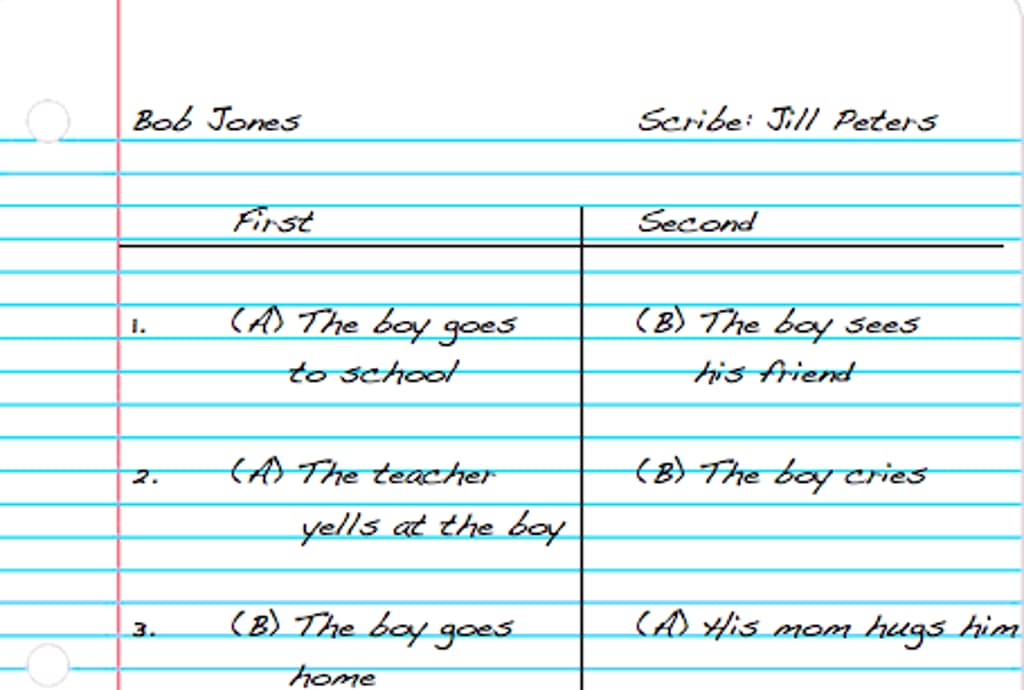This can be done in pairs or individually. If it's done in pairs, have one student write down the answers for his or her partner, then switch roles. If it's done individually, students can write down their own answers. After you've "finished" a story (asked a complete script), have students take out a piece of scrap paper and draw a line down the middle. Write "Primero" (first) on the left and "Segundo" (second) on the right. Draw a horizontal line beneath it to set it apart as the heading, then number the paper for however many questions each student will need to answer (3-5 is plenty).
For each question, give the students two short events from the story in the target language. Title them as "A" and "B" so that students can differentiate between the two statements. Ex: A: The boy goes to school. B: The boy sees his friends Students will determine which event happened first in the story, and which event happened second. They write the first event in the "Primero" column and the second event in the "Segundo" column.
Repeat the statements as many times as needed for the students to be able to transcribe them--this is why it is important for you to keep the events very brief! No fluffy details here. For the partner version, I would alternate questions for the students, so that they switch roles between each question, instead of giving one student all of his questions while the other writes all of them, then switching. When they are finished, their paper should look something like this: 


